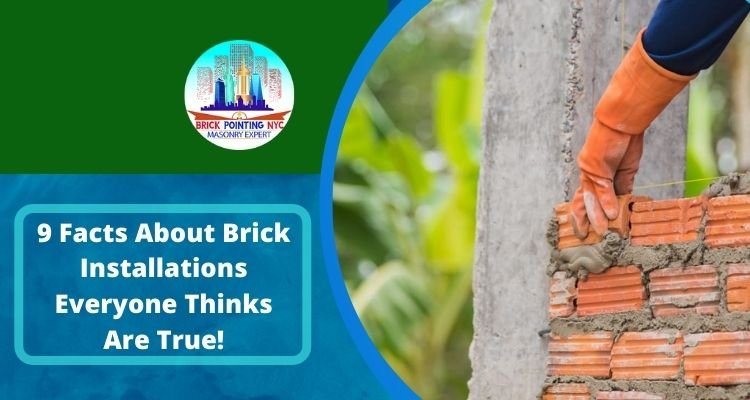Brick masonry of different types has been used for the construction of buildings for many years, and it still remains one of the most versatile and durable of all competitor modern materials. Bricks can be basically used for anything! It is so because brick is one of the best building materials available in the market. But why? Here are outlined 10 facts about the brick installation that everyone thinks are true!
1. Bricks vary based on their use.
Most bricks are composed of clay and shale and are kiln-fired. These can be split into a few categories. Face Bricks are used for their durability and appearance – for example, in the exterior of buildings.
2. Refractory bricks are specially manufactured.
Special manufacturing is to include properties such as withstanding high temperature and having low thermal conductivity for better energy efficiency. They have a number of additives to improve their ability to withstand the harsh and extreme conditions that they are meant to be exposed to.
3. Bricks use Barium Carbonate to control efflorescence
The white powdery scum that tends to develop on new brick masonry is termed efflorescence or scumming. This happens because of water-soluble salt deposits emerging from within the masonry wall. It can be prevented by using the correct additives such as barium carbonate. It eliminates scumming by reacting with the soluble salts that cause efflorescence and locks them within the clay body while hindering its migration to the surface.
4. Color of the brick is controlled by chemical and mineral content
The chemical and mineral content of the raw materials upon being fired is responsible for imparting the fired colour of bricks. Fired bricks contain silica (sand), alumina (clay), lime, iron oxide, and magnesia. Iron is converted to iron oxide when a brick is fired, which imparts a red colour to the bricks.
5. Do Bricks have Frogs?
Yes! The indentation in the surface of bricks is called a “frog.” Its purpose and naming are debatable. There is also debate about whether frogged bricks should be laid frog-up or frog-down.
6. Bricks Are Energy Efficient
Brick walls are better at insulating the house from outside temperature compared to most other building materials. An all brick house is highly energy-efficient, and brick wall installation cost is lesser than other materials.
7. Bricks Are Durable
A brick wall installation can last hundreds of years or more. Some of the most ancient buildings in the world that are still standing were formed from brick.
8. Bricks Are Elegant
Bricks are undeniably classic, elegant and richly diverse. No two brick walls can ever be exactly the same. Many different styles incorporate bricks, from ancient castles to some of today’s most luxurious residences.
9. Bricks Are Sustainable
Bricks are highly sustainable. Brick plants are now putting alternative energy sources to work, using non-fossil fuel resources, for instance, capturing methane that is released by the trash from landfills or agricultural waste.
10. Bricks are highly environment friendly!
The production of bricks is becoming more and more efficient as well as green.
Brick is ranked among the very best since it is durable, beautiful, and energy-efficient. No wonder, they are the most sought-after building material for constructing any building!


